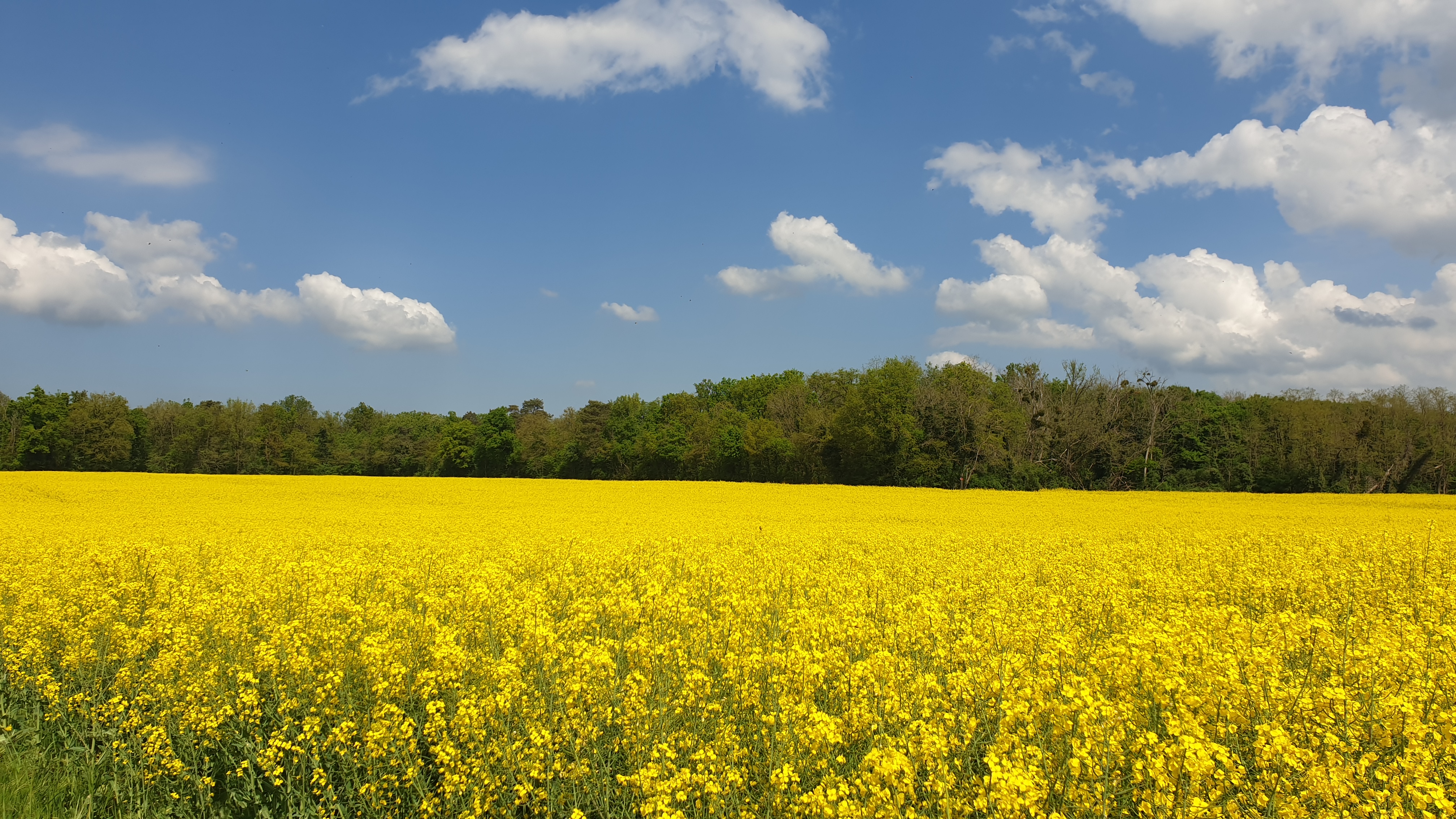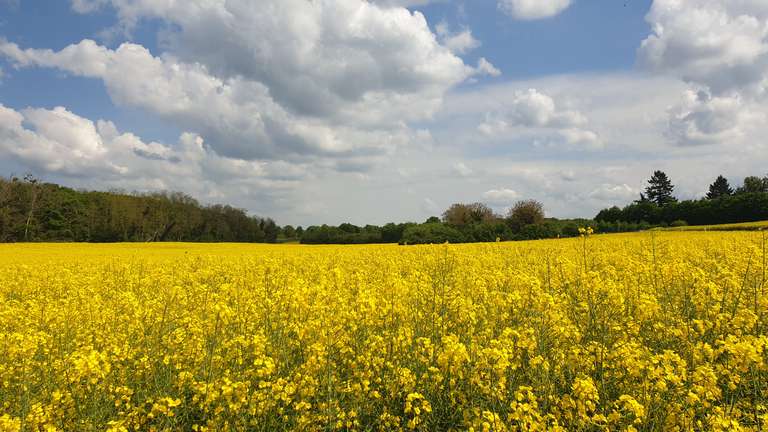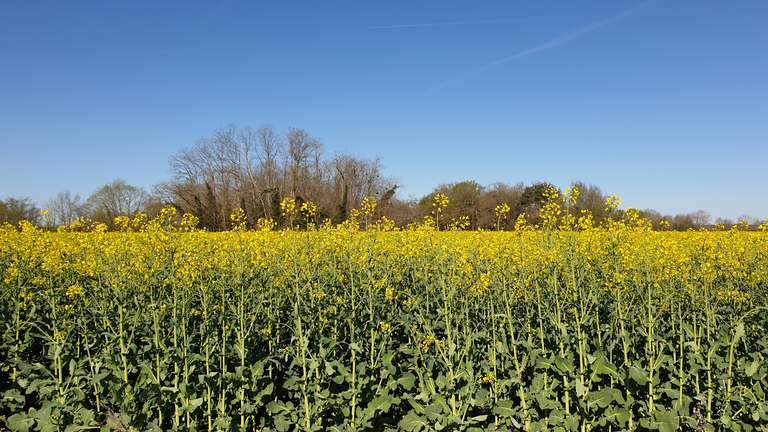Colza

Colza, known as rapeseed in English, is a valuable crop widely grown across France, including in the Fontainebleau district. It's part of the oilseed family and is primarily used to produce vegetable oil. However, Colza is also rich in plant-based proteins, which makes it useful for many purposes—including food production, animal feed, green chemistry, and renewable energy.
Table of Contents
Lifecycle
Colza is sown at the end of summer and harvested the following July, staying in the ground for about 300 days. This long growing season helps protect the soil from erosion. It also improves soil health by absorbing nitrogen in autumn and breaking the cycle of diseases and weeds that affect cereal crops. Colza flowers attract pollinators like bees, making it an important part of local biodiversity. Its successful growth depends on good planting techniques, especially to avoid damage from pests such as flea beetles and weevils.
A Plant with Ancient Roots
Colza is believed to be an ancient hybrid, formed naturally or in gardens from the cross between wild cabbage and turnip rape. This plant has been known for over 3,000 years, with early uses dating back to 1500–2000 BC. Over time, two main varieties were selected from this hybrid: rapeseed for oil and rutabaga for its edible roots.
In France, Colza became especially important during the 18th and 19th centuries. Its cultivation expanded rapidly in the northern regions—particularly in Flanders. By the 1750s, the Department of the Nord saw widespread Colza farming in areas such as Lille, Douai, and Hazebrouck. Historical records show that windmills, known as tordoirs, were used to press the oil, with some processing up to 600 hectolitres per year. Most of the oil produced was exported to Paris or abroad.
Engineer Joseph Cordier noted in 1823 that Flanders had become one of the world’s leading regions for oilseed farming and oil production. At the time, around 200 wind-powered oil mills operated near Lille, and steam-powered machines were being introduced.
Multiple Uses of Colza Today
Colza continues to play a key role in French agriculture and contributes significantly to both the economy and sustainability goals. Its main uses include:
Food
Rapeseed oil is widely consumed in France and used in cooking, salad dressings, and industrial food products. It's valued for being high in healthy polyunsaturated fats.
Animal Feed
After the oil is extracted, the remaining protein-rich meal is used to feed livestock, supporting meat and dairy production.
Biofuels
Colza is a major source of biodiesel, helping reduce greenhouse gas emissions and supporting France’s renewable energy targets.
Industrial Uses
Components of Colza can be found in the manufacture of bioplastics, lubricants, and even cosmetic products.
Colza Salad Dressing
- 1 cloves garlic, crushed
- 1.5 teaspoons mustard
- 3 tablespoons mayonnaise
- 3 tablespoons white wine vinegar
- 1.5 teaspoons lemon juice
- 6 tablespoons Colza oil
- 1.5 tablespoons finely chopped seasonal herbs
Salt and Pepper to taste.
In short, Colza is more than just a field crop. It supports pollinators, improves soil, feeds animals, fuels vehicles, and even helps produce everyday products. Its environmental benefits and wide-ranging applications make it an essential part of sustainable farming in the Fontainebleau District and beyond.


